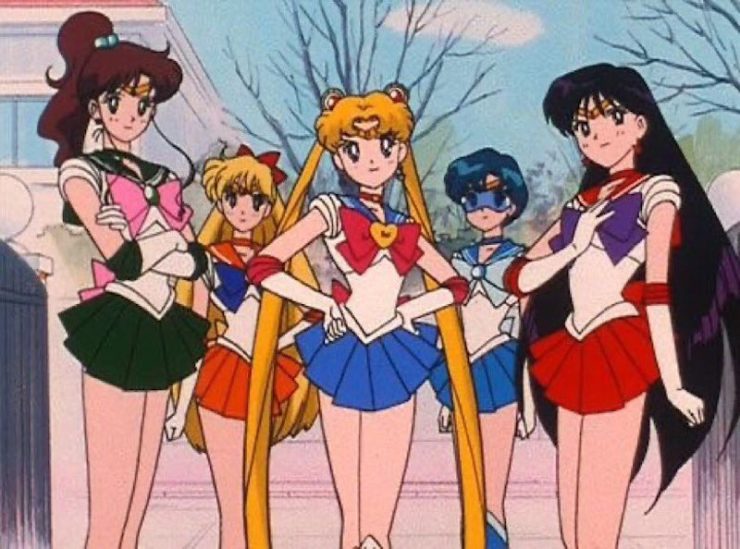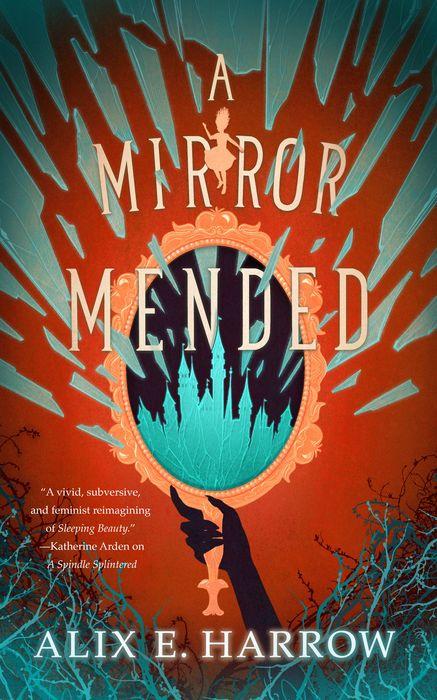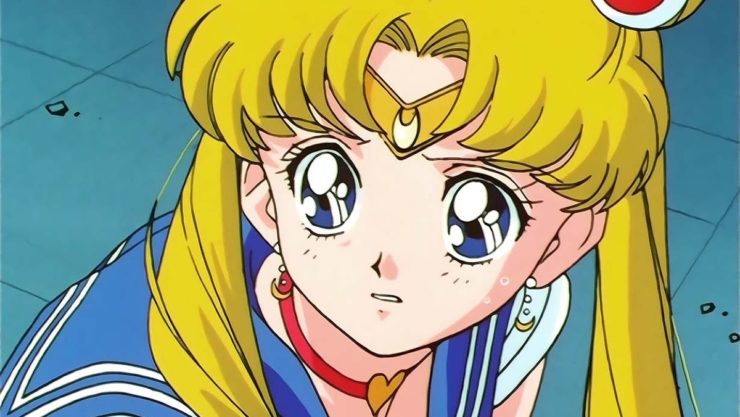When we talk about an “iconic” show or franchise, how do you define what makes a piece of media iconic? I suppose you could try to define it simply by the sheer amount of merchandise produced—if that were the case, Sailor Moon would be iconic and then some. If you were a child in the 1990s and you liked Sailor Moon or knew someone who liked Sailor Moon, the series could feel omnipresent. Aside from the manga and the anime themselves, there were Sailor Moon dolls and stuffed toys, Sailor Moon party favors and decorations, Sailor Moon CDs, print novelizations of Sailor Moon episodes, a Sailor Moon collectable card game, Sailor Moon action figures, Sailor Moon lip gloss, and probably dozens of other Sailor Moon items that I can’t think of right now. (If you were a child in Japan, you might also have encountered Sailor Moon tissues, Sailor Moon puzzles, a Sailor Moon stage musical, and a Sailor Moon-themed toy fax machine which, as far as I can tell, never made its way to the U.S.)
But… plenty of absolutely flop properties churned out piles of merchandise on the way to flaming out. Maybe iconic media is something that people collectively remember fondly and still think about, even thirty years later?
We’ve reached a point where modern Western media is partly being produced by the people who grew up watching Sailor Moon as children, and it’s safe to say that memories of the show linger in the back of their minds. Plenty of cartoons have made quick references or allusions to Sailor Moon here and there, often through brief reenactments or updated versions of the main character’s transformation sequence and/or the poses Usagi makes in the “in the name of the Moon” speech directly after said transformation sequence. Elena of Avalor, The Dragon Prince, She-Ra and the Princesses of Power, and Steven Universe have all referenced the sequence and poses in one way or another. Sailor Moon’s transformation sequence has been referenced enough times in Cartoon Network shows that there’s an official compilation video on the Cartoon Network YouTube page. Aesthetic cues aren’t limited to just the transformation sequence, of course: Domee Shi, director of the Pixar film Turning Red, stated in an interview with Polygon that the pastel color palette of the anime’s backgrounds helped inspire the film. The official animated video for “Levitating” by Dua Lipa also draws visual cues from Sailor Moon, along with various other 1980s and 1990s anime.
Though it’s possible to reference something just for the sake of referencing it, as just a fun, random Easter egg, plenty of people are vocal about their long-term love of Sailor Moon. Wrestler Sasha Banks, who wore a Sailor Moon-inspired outfit at 2022’s Royal Rumble, has been open about her love for the series and in an interview, talked about how she identified with Sailor Moon herself. The Russian figure skater Evgenia Medvedeva has skated several Sailor Moon-themed routines over the past six years before being cast in the official Sailor Moon ice show, “Sailor Moon: Prism on Ice.” Singer and actress Lizzo has been a Sailor Moon fan since her childhood. She’s mentioned the show multiple times in interviews and for Voodoo Fest 2018, she and her backup dancers all wore Sailor Moon-themed outfits.
But for me, more than anything else, the thing that elevates Sailor Moon beyond the level of nostalgic fav or cult classic is the fact that it helped to revolutionize its own genre, which has never been the same since…
Generally speaking, the ‘magical girl’ genre only has a few set rules: It must star a young girl with magical powers, or superhuman powers that resemble magic. Her magical abilities must be central to the story, and usually contrast with her mundane reality. The first magical girl anime (as well as the first shojo anime, anime specifically targeted towards girls) is generally regarded to be Sally the Witch, which aired from 1966 to 1967. Sally kicked off a magical girl trend for “Cute Witch” characters operating in a mundane world. The “cute witch” occasionally could be open with her powers, but often had to keep them a secret. Her magic was used more to solve everyday problems than to fight supernatural evil. While there were magical transformations, they were not superhero-style transformations—the cute witch could appear older, for example, or could make herself look like a friend or some other character.
In the 1980s, the trend shifted slightly as the archetype of the cute witch was reinvented as a magical idol singer. The magical girl still had limited powers, she still used them to solve everyday problems, and she still rarely fought supernatural evil. There were a few changes to the basic format—as one might expect from the name, an idol singer became the career of choice, with the magical girl’s voice actress occasionally singing the opening and ending theme songs of the show. Plus, the magical girl often had a secret identity to go with her transformation—for example, Creamy Mami, from the show of the same name, is the 16-year-old alter ego of 10-year-old Yu Morisawa.
I should note that I’m obviously generalizing a little bit, here… There were undoubtedly some more action-based or team-based magical girl anime and manga properties that were popular between 1966 and 1992. But when talking about the history of something as broad as genre, sometimes it’s better to focus on wide-scale trends over individual properties. Likewise, there are absolutely some manga or anime that might have fallen through the cracks or become lost to the average fan. But I feel comfortable saying that the color-coordinated, team-based, action-driven aspect of the magical girl genre outright exploded in the wake of Sailor Moon’s success. While there had been similar team-based action shows out there, such as the Super Sentai franchise (best known in the West as Power Rangers), Sailor Moon was one of the first to take that those elements and target the formula towards girls. And, boy, did people take notice.

The magical girls in Sailor Moon faced problems that tended to be on a greater scale than something like a grumpy neighbor, a disagreement between friends, or performing at a big concert. They had to deal with those kinds of problems, sure… but they were also withstanding supernatural evil actively trying to kill them on a daily basis. Sailor Moon drew upon the action aspect of more traditional boys’ shows as the Sailor Scouts regularly battled evil using their magic powers and, occasionally, their fists. Likewise, the stakes were much higher than in previous magical girl stories. While the specific motivations shifted, each final villain had essentially the same goal: take over the world. There was so much more on the line here, compared to the relatively mundane conflicts of the cute witches and magical pop idols that came before.
And of course, when it comes to Sailor Moon, the ‘team’ aspect is just as important as the action aspect. By expanding the core cast to include five magical girls instead of one, the series allows the various individual personalities shine, giving the audience a greater opportunity to find a character they truly identify with: It’s okay if you’re not the brainiac Ami or the clumsy Usagi—you might find a better fit with the tomboy Makoto. And it’s because it offers these connections and brings all these elements together so effectively that fans still feel intense nostalgia for the show.
The color-coordinated anime action team exploded in popularity after Sailor Moon came onto the scene. Other 1990s series like Wedding Peach, Magic Knight Rayearth, and Corrector Yui followed this trend. The 2000s continued going strong with color-coordinated action team series like Tokyo Mew Mew, Powerpuff Girls Z, and the Pretty Cure franchise (which is still on the air) putting out new episodes on a weekly basis. Even shows focused on deconstructing the genre or offering a darker and edgier take, such as Puella Magi Madoka Magica, still treat the color-coordinated action team as a core component of the action.
Buy the Book


A Mirror Mended
There are still shows about cute witches and cute pop idols solving mundane problems—the birth of the color-coordinated action team simply showcased a new direction in which the genre could go. And based on how much money the Sailor Moon franchise has made since its inception, it’s obvious that people have responded quite enthusiastically to this new direction. In 2014, The Japan Times reported that the franchise earned an estimated $13 billion from sales worldwide. While some items are still targeted towards children, the brand demographic has notably shifted towards adult women. Collaborations with fashion and cosmetic brands such as KITH and ColourPop sell out within minutes. Stores such as Hot Topic, Uniqlo, and Torrid carry Sailor Moon-themed clothing and accessories. Universal Studios Japan regularly screens a 4-D Sailor Moon movie experience and sells merchandise at the park, some of which is very obviously targeted towards adults.
The manga is continually re-released and reprinted in the United States, ensuring that it’s always on bookstore shelves. When Kodansha Comics acquired the distribution rights for Sailor Moon in English in 2011, they published the series as twelve volumes and two short story collections. In 2017, they re-released the manga in a new “Eternal Edition,” which was printed on oversized, premium paper and featured a new translation as well as color images. In November 2020, Kodansha Comics announced that they would re-release the manga again, as part of their Naoko Takeuchi collection. Three different re-releases in less than fifteen years isn’t the norm for most manga, which generally receive a one-and-done release in the West.
And hey, remember those musicals I mentioned all the way back in the first paragraph? They’re still happening! Popular anime and manga properties receiving stage musicals is not unique to Sailor Moon—properties such as Death Note, My Hero Academia, Ouran High School Host Club, and Revolutionary Girl Utena have all received stage musicals. But what’s unique about Sailor Moon is just how many there are—to date, there have been thirty-one Sailor Moon musicals. The first premiered in 1993 while the most recent premiered in 2021. Recent musicals have had limited engagements in Shanghai and New York City and a limited screening of a subtitled recording of Pretty Guardian Sailor Moon — Le Mouvement Final aired in American theaters. Most musicals reused the plot of the manga, though there were some with original plots: in one, Sailor Moon fights Dracula!
All this is to say—in case there was any doubt—I think we can absolutely call the Sailor Moon franchise iconic. There are very few franchises that have enough staying power to revolutionize an entire genre with repercussions still felt today. Likewise, though the target demographics have shifted somewhat, the franchise still makes quite a lot of money through licensing, merchandise, and other opportunities. Sailor Moon has possibly even more power today than it did in the 1990s—though I suspect the toy fax machine will remain a relic of the past.
Katie Gill (@katiebeluga) is a librarian by day, essayist by night. You can read her work at The Deadlands, Manor Vellum, and Anime Feminist and hear her voice on PseudoPod.










